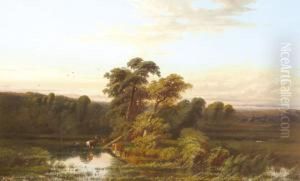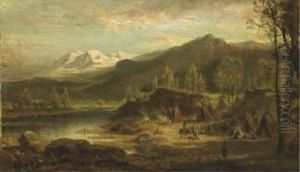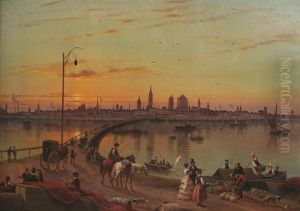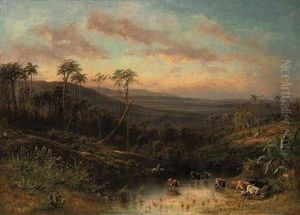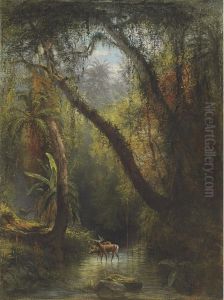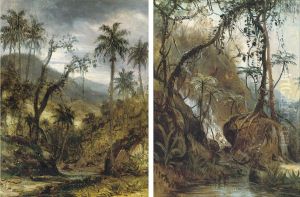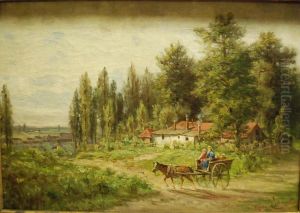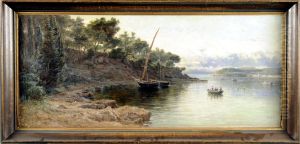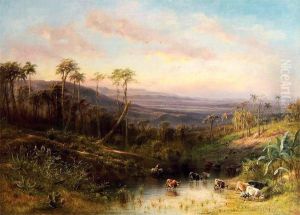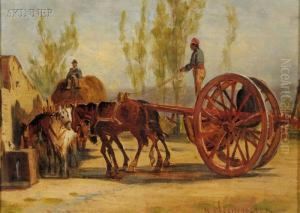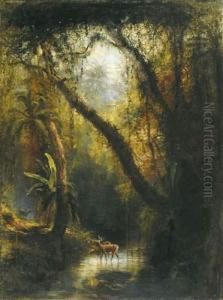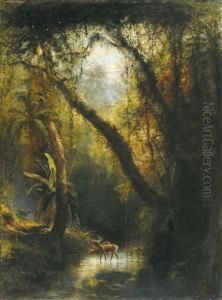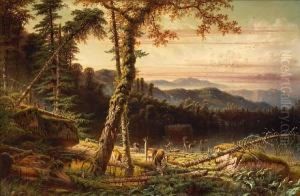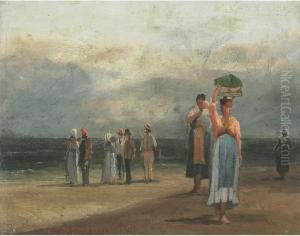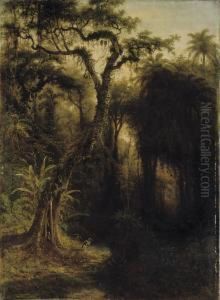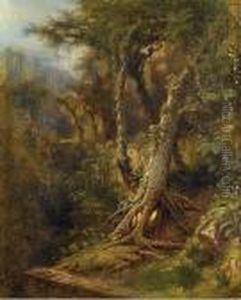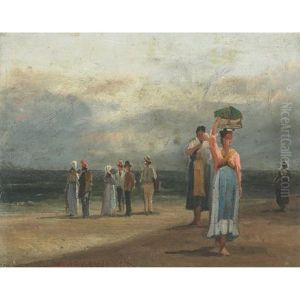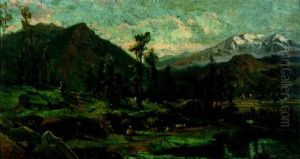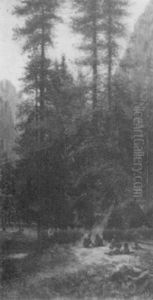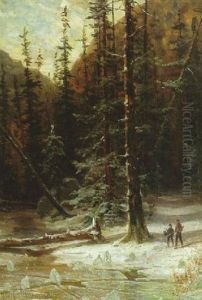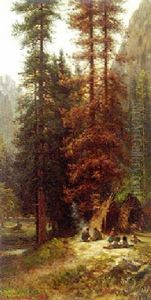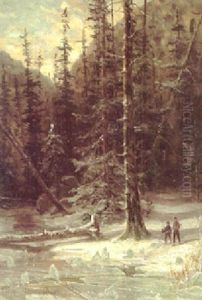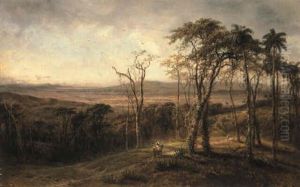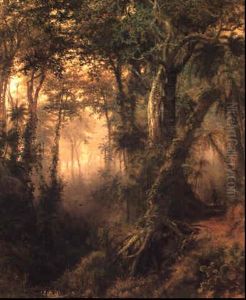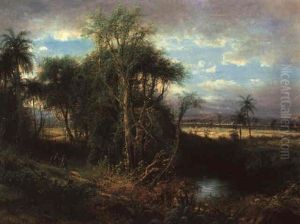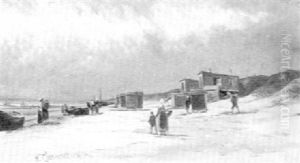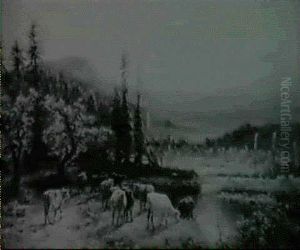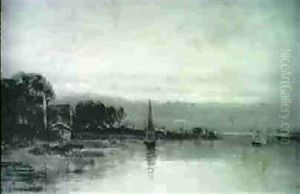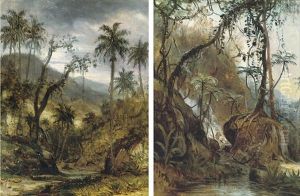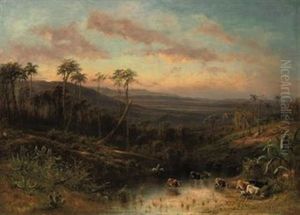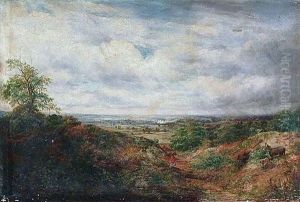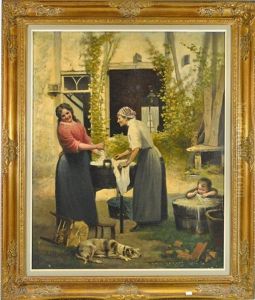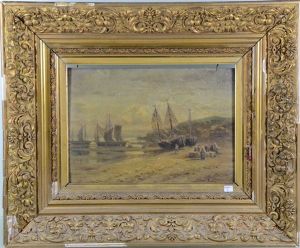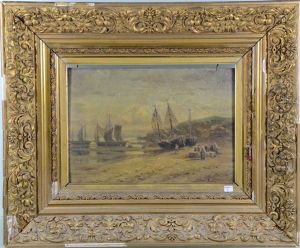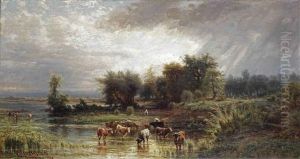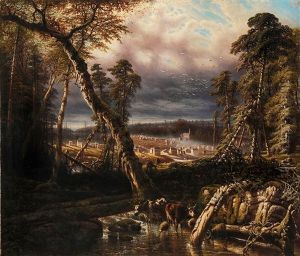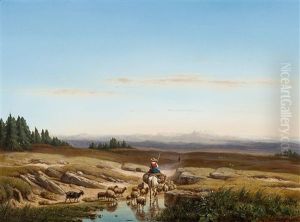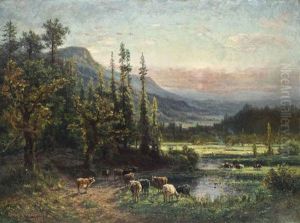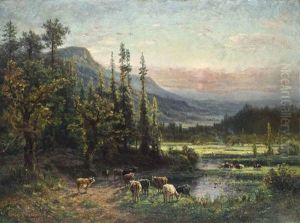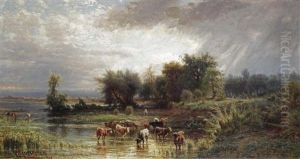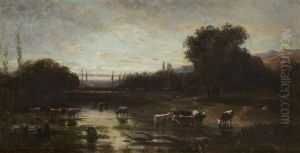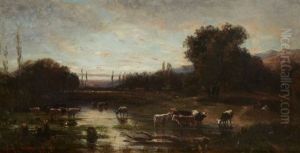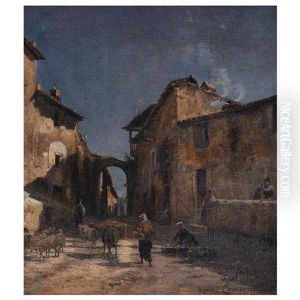Henry Cleenewerck Paintings
Henry Cleenewerck was a Belgian-born artist who achieved recognition for his work primarily in the 19th century. Cleenewerck was born in 1818 in Bruges, Belgium, and was known for his landscape paintings and scenes of American life. He received his artistic training in Europe but later moved to the United States, where he continued to work and exhibit his art.
Cleenewerck's style was characteristic of the romantic movement that was prevalent during his time, with a focus on picturesque and pastoral landscapes. He often depicted the rural countryside, emphasizing the beauty of nature and often imbuing his scenes with a sense of tranquility and nostalgia.
While in the United States, Henry Cleenewerck became connected with the burgeoning art scenes on the East Coast. He traveled extensively throughout the country, capturing the diverse landscapes and the spirit of American life. His works during this period contributed to the cultural exchange between Europe and America, as he brought European techniques and sensibilities to his depictions of American subjects.
Despite his travels, Cleenewerck remained relatively obscure compared to his contemporaries, and his work did not gain the same level of fame as some other artists of the era. However, his paintings are now considered valuable for their historical and artistic merit, providing insight into the 19th-century art world and the transatlantic exchange of artistic ideas.
Henry Cleenewerck passed away in 1901, leaving behind a body of work that continues to be studied and appreciated by art historians and collectors. Although not a household name, his contributions to 19th-century landscape painting and his role in the cultural dialogue between Europe and America have cemented his place in art history.
